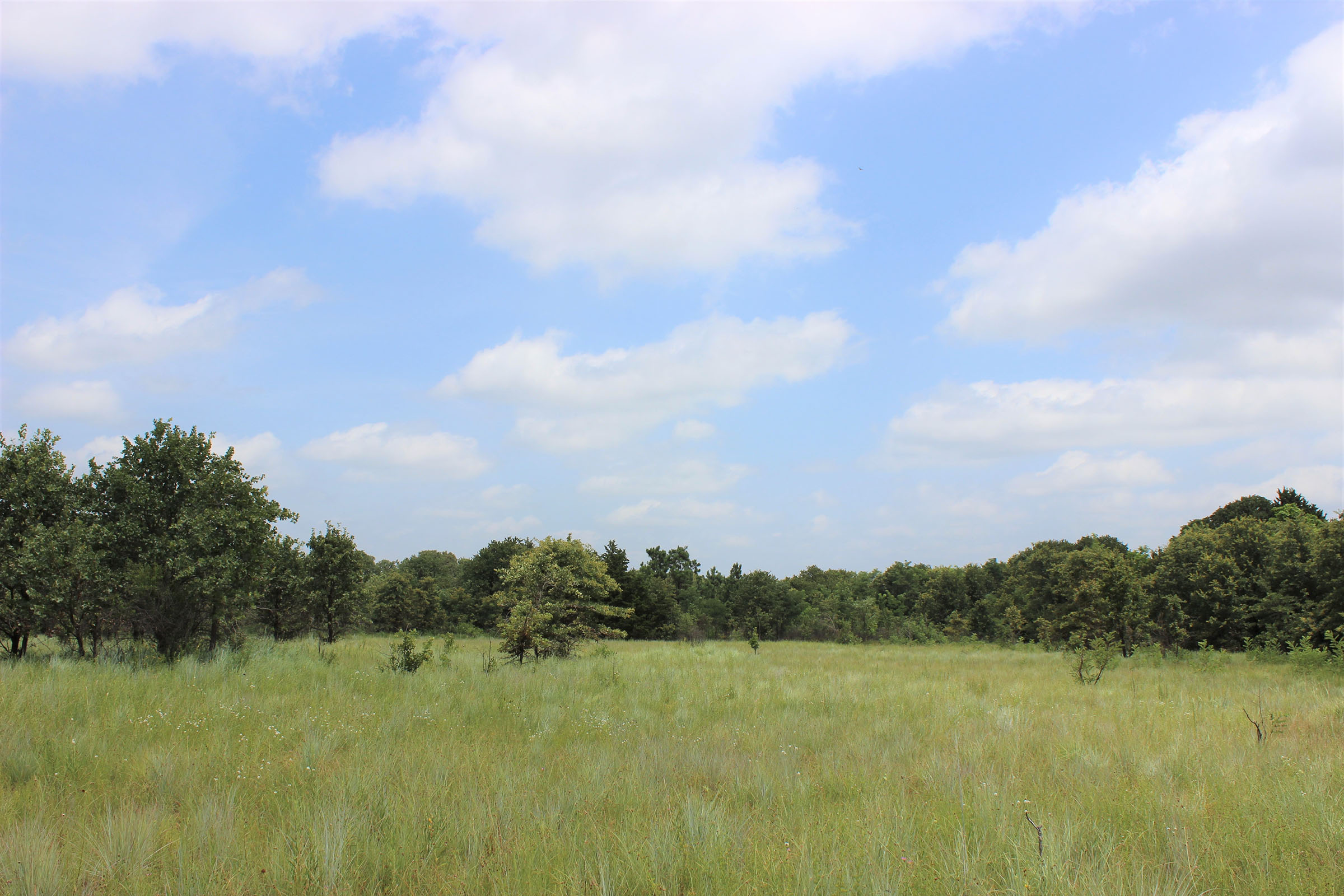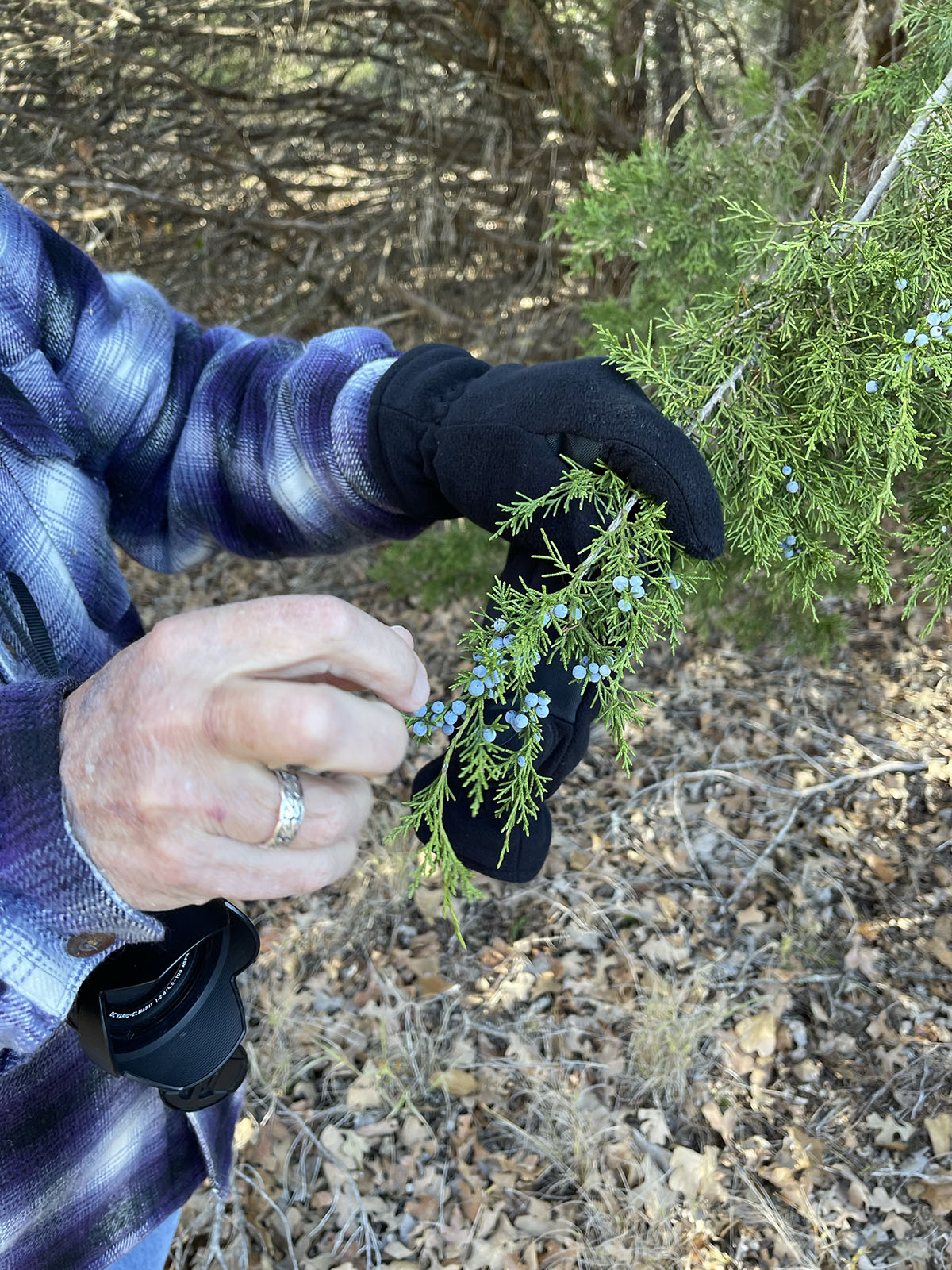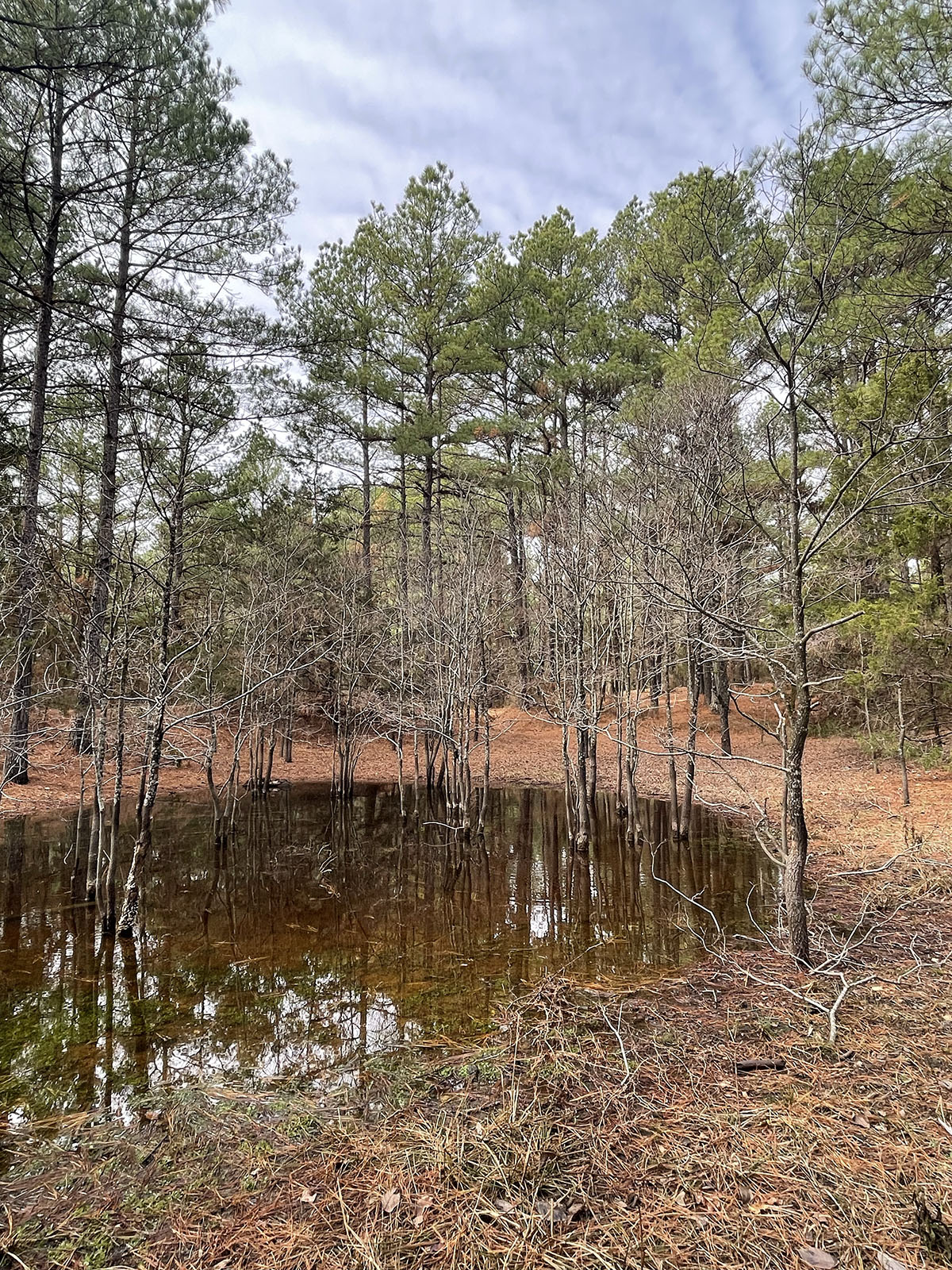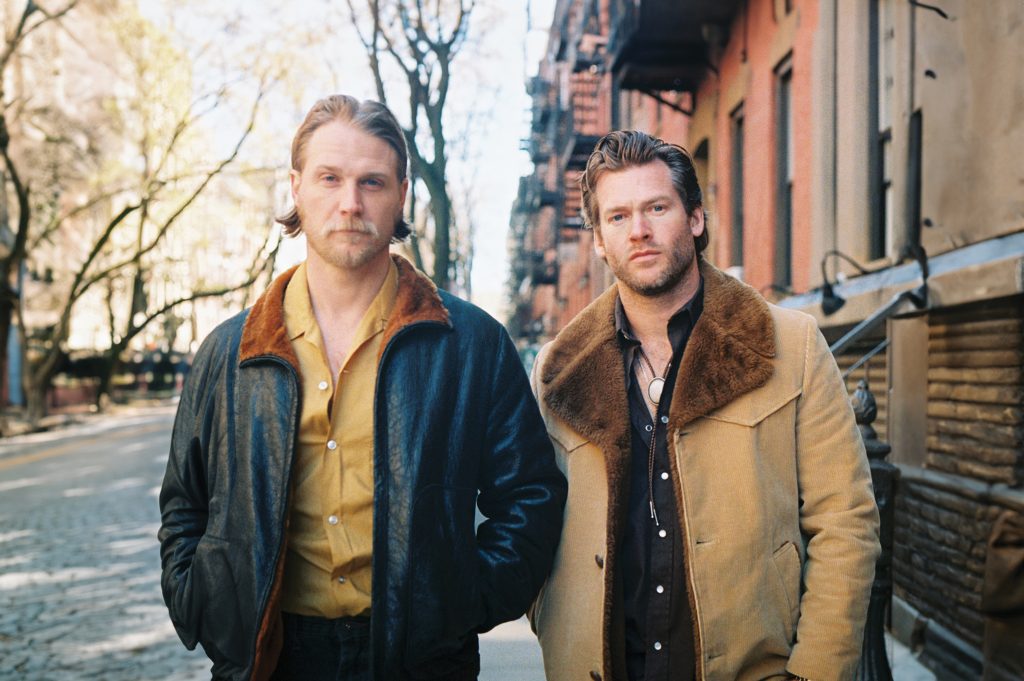
The LBJ National Grassland in North Texas became public almost 100 years ago. Photo from Michael Smith for LBJ Grasslands.
Meandering down a dirt path surrounded by native prairie all around, I feel calm as leaves crunch under my feet and grassland unfolds in front of me. There’s no one here but me and my two guides: Kayla West, a master naturalist; and Michael A. Smith, a herpetologist and author of The Wild Lives of Reptiles and Amphibians: A Young Herpetologist’s Guide and Herping Texas: The Quest for Reptiles and Amphibians.
Not far into our walk, West begins examining a tree branch curiously and tells us she’s identified six different types of lichen on the branch, including golden-eye lichen. She pulls out a small hand lens to show me an up-close look. What appeared to be ordinary yellow spots on the branch come to life under the lens as orange, cup-like stalks mingling with tangled, ochre branches create an entirely different magnified world.
We’re at the LBJ National Grassland in Decatur, about an hour north of Fort Worth, where more than 20,000 acres of public land is open to all for camping, hiking, hunting, horseback riding, and guided nature walks.
The grasslands became public almost 100 years ago after the Great Depression and Dust Bowl, a time when up to 25 million acres of prairie were turned into farmland and then unintentionally destroyed by erosion and drought. After attempts at farming and ranching depleted many acres, the government bought up much of the land, including the LBJ Grasslands, to preserve the land from further damage. Today, the patchwork acres of land are managed and periodically maintained by the Forest Service. Some of the land has come back from restoration, and some from being left alone.

Guided tours offered by the LBJ Grasslands Project let nature lovers see the wilderness from a new perspective. Photo by Amanda Ogle.
While anyone is welcome here to enjoy nature, not many people do, as not many know about this wild place. “It feels deserted, which is kind of great,” says West as we pass by thickets and what appears to be wild plum trees. “So many people that live in the area don’t even know this is here.”
Through the LBJ Grasslands Project, West and Smith hope to fix this by getting more people outside at the grasslands, as they believe humans need to be outside more to appreciate the natural spaces around them, especially in a world becoming more digitized every day. Plus, if more people would use the area for hiking and camping, it would be more difficult to turn it into development, West notes. Smith adds that there’s no current threat of that happening.
“In general, we think that the more public support there is for a place in a more natural state, the more solid its prospects for ‘wildness,’” he says.
The duo hosts guided nature walks throughout different areas of the grasslands, showing city folk (or those looking for solitude) pothole ponds, plant species, and animal tracks. There are no established or paved trails here, only dirt routes that have been worn mainly by horseback riders and hikers. I’m told we could walk out here for hours.

Woodsy areas and small ponds provide a respite from city life just an hour away. Photo by Amanda Ogle.
On my walk, Smith shows me leaves from post oaks and blackjack oaks while explaining how to tell the difference between the two (blackjack oak leaves have three main veins, each with a tiny spine sticking out of the end), and then prompts me to eat a handful of juniper berries so I’ll know what they taste like.
“We also want to add an element of reflection and writing out here and want people who aren’t comfortable being outside to reorient themselves with nature and look at what’s in your own backyard,” says Smith, who encourages visitors to write a letter to the grasslands to reflect on the seasons of their own lives.
They also encourage people to bring their children, as it’s imperative for kids to develop a kinship with nature at a young age for them to appreciate it as adults. “They’re the next legacy deciding what happens to spaces like this,” West says. “So, if they don’t care, what happens to these few natural spaces that still exist?”
After passing by a small pond and meandering through a pine grove that doesn’t belong here (Smith says the Forest Service dispersed the seedlings here long ago to see if they would grow), I realize how much peace comes with immersing yourself in nature—even if nature isn’t too far from civilization. From examining oak leaves and microscopic lichen to watching towering pine trees gently sway in the breeze, my appreciation for our sacred outdoor spaces grows each time I take a hike.
For your own guided LBJ Grasslands experience, reach out to Kayla West and Michael A. Smith on the LBJ Grasslands Project and check for updates on upcoming walks.








